James L. Franklin
Chicago, Illinois, United States
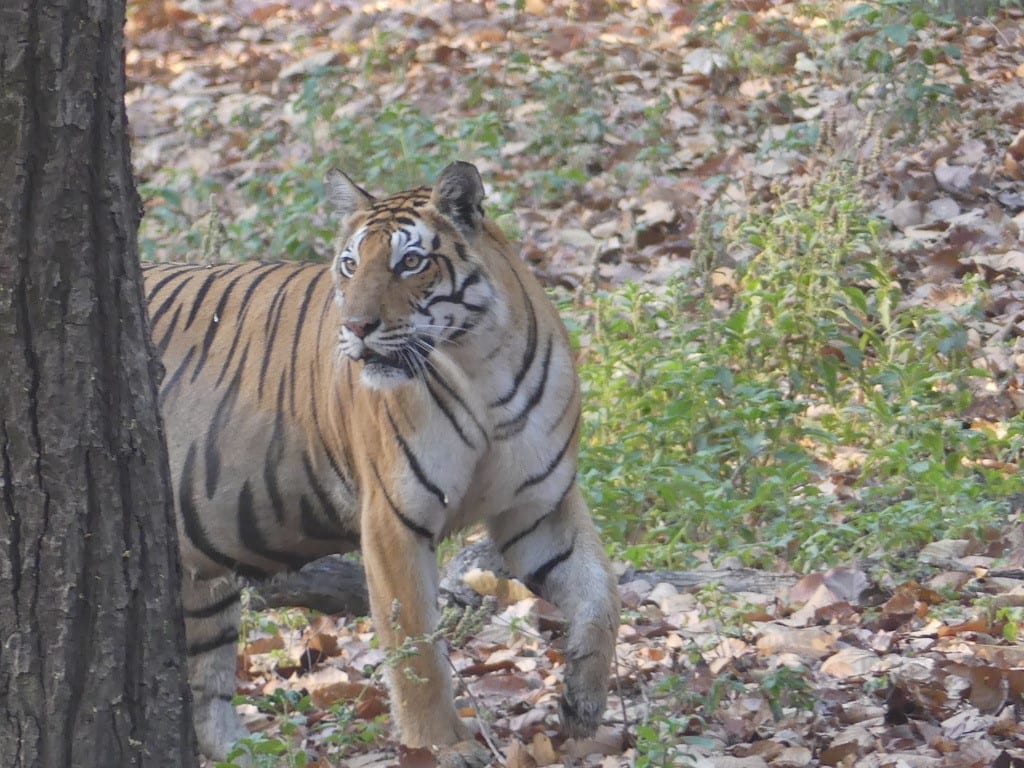 |
The Indian subcontinent for millennia provided the ideal “jungle” habitat for the tiger. When the first Europeans arrived in India the animal was ubiquitous. At the close of the nineteenth century, when Kipling wrote The Jungle Books, 100,000 tigers were thought to roam the subcontinent. By 1971, a critical year in the history of tiger conservation, there were estimated to be about 1,800 left alive. Today those numbers have almost doubled through the efforts of Project Tiger, a dedicated conservation program. While the Indian tiger reserves are quite large, the complex requirements for ideal tiger habitat result in a surprisingly small number of tigers in even the most successful parks. Of the fifty National Tiger Reserves in India, only five have over 100 resident cats. For example, Kaziranga Tiger Reserve in Northeast India has the highest density of tigers in the world with a population of 118 cats. Many reserves have lower numbers, thus explaining the difficulty of sighting a solitary animal that seeks not to be seen. Brian Phillips notes in his recent essay “Man-Eaters”:
“There is a sun-faded sign outside Bandhavgarh, the densely forested jungle reserve in Central India, featuring a picture of a tiger and next to the tiger the sign reads: PERHAPS YOU MAY NOT HAVE SEEN ME, BUT PLEASE DON’T BE DISAPPOINTED. I HAVE SEEN YOU.”
There has been a dramatic human encroachment on, and fragmentation of, tiger habitat within the Indian subcontinent. The human population of India leading up to the twentieth century was stable at approximately 200 million. Since 1900, the population has increased to over 1.34 billion persons in an area of 1.3 million square miles, almost a third the area of the continental United States. Translated into population density, there are 1,200 people per square mile in India while the continental United States is home to 93 residents per square mile.
 |
| Figure #2: Entrance to Pench National Park, Madhya Pradesh |
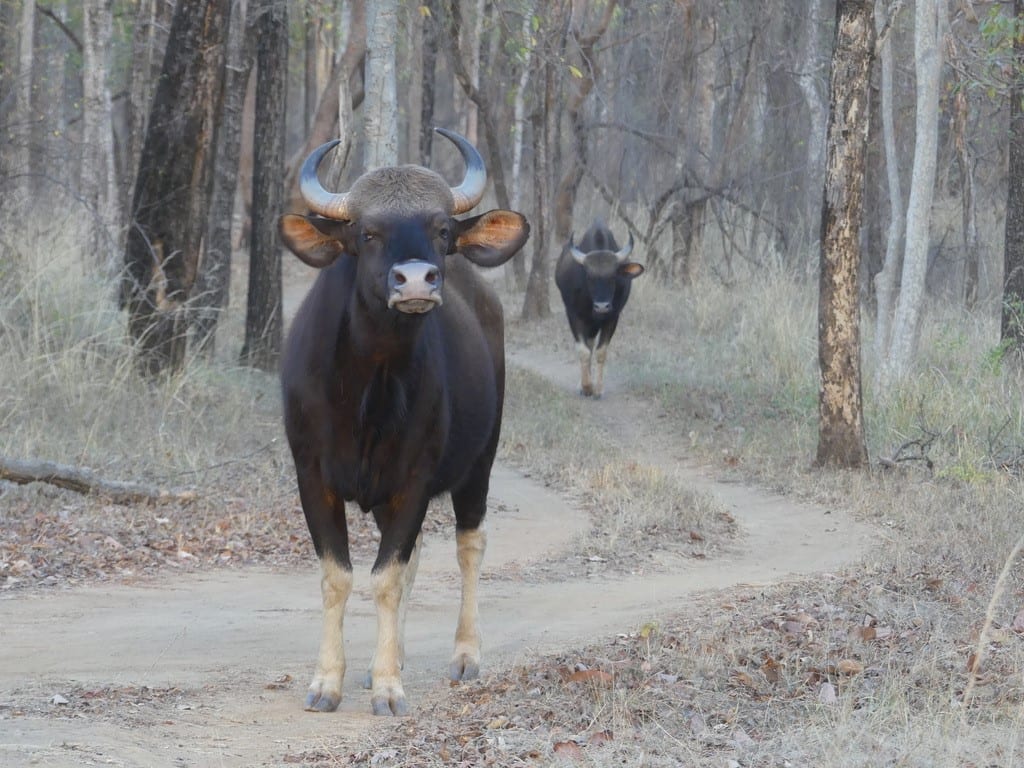 |
| Figure #3: Indian Gaur—Bos garus |
 |
| Figure #4: Distinctive tiger pug print1 |
 |
| Figure #5: Tiger territorial claw markings on an Indian Sal tree |
The Pench Tiger Reserve or Pench National Park is one of the premier tiger reserves of India. It is located in Central India in the state of Madhya Pradesh and nestled in the southern slopes of the Satpura mountain range. The Satpura mountain range is one of two east-west ranges that divide the Indian subcontinent into the Indo-Gangetic plain of northern India and the Deccan plateau of the south. The Pench Tiger Reserve is named for the Pench river which flows through the park from north to south, dividing the park in half and forming the boundary of the Seoni and Chhindwara districts of Madhya Pradesh. At the entrance to Pench National Park, there is a sign featuring a photograph of a snarling leopard (Figure 2). Beneath the photograph, the sign reads: “Thanks for visiting Pench National Park/The Mowgli Land.”
Mowgli Land refers to the famous stories written by Rudyard Kipling and published in two volumes as The Jungle Books. Many of the animals indigenous to the tiger reserves of Central India make their appearance in The Jungle Books. Though Rudyard Kipling was not a naturalist, many of his stories are set in the forests of Pench National Park and Kanha Tiger Reserve. The stories were written during the 1890s when Kipling was living in rural Vermont far from India. Kipling used details from Robert Armitage Sterndale’s Seonee, or Camp Life on the Satpura Range (1877) and also Sterndale’s Natural History of the Mammalia of India and Ceylon (1884). The villain of the Mowgli tales is the tiger Shere Kahn.
The Bengal tiger is the iconic animal of India, the apex predator of the Indian jungle, and hailed as the “King of Beasts” of the subcontinent. While the impressive dark mane of the African male lion earns the sobriquet “King of the Beasts,” both in length and weight, he can only claim a significant second place to the Bengal tiger. The tiger is not invulnerable, though, and can be fatally injured attacking one of its larger prey—as an example, the Indian Gaur, the largest bovine in peninsular India weighing up to 2,000 pounds (Figure #3). There is even a hazard in attacking the lowly Indian crested porcupine. Its long quills embedded in the paw or body of an inexperienced young tiger may lead to fatal consequences.
Tigers are solitary hunters and, with the exception of a female and her cubs, adult tigers are usually seen alone. They establish and maintain territories by spraying urine and by marking with their scat, their distinctive pug marks (foot tracks), and by prominently scratching trees (figure #4 and 5). Male tigers generally require up to 40 square miles of territory while females require less. Young females generally establish territories close to that of their mothers while young males migrate further and seek a new territory free of other males. They may remain in another male’s territory until they are strong enough to challenge the older male but many perish in this endeavor.
Within the animal kingdom, the tiger is in Class – Mammalia, Order – Carnivora, Family – Felidae, Genus – Panthera. As a species, the Bengal tiger is designated by its Linnaean classification as Panthera tigris tigris. While there is a wide spectrum of variation in the Felidae family in size, color, and coat pattern, they are still all instantly recognizable as cats. From the common domestic cat to its largest members, the Bengal or Siberian tiger, all Felidae share certain common traits. They all have five toes on their forefeet and four on their hindfeet. Their claws are actively protractile and attached to the terminal bones of the toe. As obligate carnivores, they share a similar dental formula adapted to cutting and tearing flesh. They have highly sensitive whiskers on the face used to navigate in the dark and to capture prey. Their eyes are relatively large and feature several anatomical adaptations that enhance night vision. Tigers are crepuscular animals hunting primarily in the twilight and at night. It is said that if you stripped all the different domestic and wild cats down to their skeletons, save for small details they would appear quite alike, a testimony to the elegance of their basic design.
DNA technology has revolutionized the study of cat evolution. Geneticists subdivide the cat family—Felidae—into thirty-seven species that fall into eight distinct lineages. The evolution of the cat family began almost eleven million years ago. The Big Cats, or the Panthera lineage, appeared over six million years ago and are currently represented by five species; the lion, the jaguar, the tiger, the snow leopard, and the leopard. Vivek Menon’s Indian Mammals: A Field Guide lists fourteen species of Felidae endemic to the Indian subcontinent.
The tiger evolved and migrated not out of Africa, but Asia where it appeared two million years ago during the Pleistocene Epoch. Historically it was present throughout Asia from eastern Siberia to the islands of Indonesia and west to the Caspian Sea.2 With the expansion of human populations and rising sea levels, tiger populations became isolated and differentiated into several subspecies. The Indian tiger has always been the most numerous. Other subspecies include the Caspian tiger (P.t. varigata), the Bali tiger (P. t. balica), the Javan tiger (P. t. sondica), the Sumatran tiger (P. t. Sumatrae), the South China tiger (P. t. amoryensis), and the Amur Tiger also known as the Siberian tiger (P. t. altaica).3 The number of tigers outside of India drastically plummeted during the twentieth century to barely sustainable numbers or to outright extinction. The South China tiger is the most threatened of the tiger subspecies. In the late 1950s, there were thought to be 3,000 to 4,000 of these cats in southern and eastern China. Mao Zedong instituted an ambitious program to irradiate them as “pests” employing the Chinese military to hunt and kill them. Recognizing his countrymen’s appetite for tiger parts, Mao harvested the kills for tiger bones that could be stockpiled and sold for Chinese traditional medical practices.
Tigers play a fundamental part in the cultural history of India. The earliest humans of the subcontinent were hunter-gatherers, tribal people called Adivasis. Their descendants make up approximately 9% of the Indian population today and can be still found among the forest dwellers of India. The tiger is featured prominently in their cosmology. The Naga of eastern India believed that man and tiger were brothers. For the Warli of western India, the tiger was a god. For the Bhils of Rajasthan, all men were descended from the tiger. The Mahabharata, the Sanskrit epic poem of India dating back to the 8th century B.C., counsels:
“Do not cut down the forest with its tigers and do not banish the tigers from the forest. The tiger perishes without the forest and the forest perishes without tigers. Therefore, the tigers should stand guard over the forest and the forest should protect all its tigers.”
Hindus venerate the tiger. The great mother goddess Durga is depicted riding a tiger protecting the people from evil and preserving the moral order. Shiva, the destroyer, is shown sitting on a tiger skin which represents the energy of creation.
Following Indian Independence in 1947, tiger shikar (hunting) became a major “sport” bringing much-needed foreign exchange into the country. As they were during the Raj, tiger skins were a much sought-after trophy. In 1970 Prime Minister Indira Gandhi banned tiger shooting over the objections of the shikar lobby: “We do need foreign exchange, but not at the cost of life and liberty of some of the most beautiful inhabitants of this continent.” The first all-India tiger census, taken at this time, showed that there were only about 1,800 tigers left in India.
In April 1973, responding to fears that this iconic animal of the Indian subcontinent would become extinct, the Indian Government with the support of Indira Gandhi launched Project Tiger. The project aimed to ensure a viable population of Bengal tigers in their natural habitat. Tiger reserves were created on a “core-buffer” strategy. The core areas were to be free of human activity and have the status of national parks and wildlife sanctuaries. Buffer areas surrounding the parks consist of forest and non-forest land and serve to protect the villages from tigers or leopards that might stray beyond the core areas. A system was developed to compensate villagers for the loss of livestock killed by these predators. Implementing this plan required the relocation of villages outside the core areas on a voluntary basis. Protecting the tigers from poaching and minimizing human/tiger interaction has been a major challenge facing Project Tiger. The history of man-eating tigers in India testifies to the terrifying impact that even a single animal can have on forest-dwelling communities. Villagers had to be convinced that the tiger reserves provided wealth and employment for the community. Today, the reserves and national parks provide career opportunities for the young men and women of the villages as guides and forest rangers. The lodges outside the parks afford further employment opportunities and income for the community.
There are currently 50 tiger reserves in India; the reserves of Central India in Madya Pradesh have the highest numbers of tigers. In 2018, the Status of Tigers in India report estimated that there were 2,967 tigers in India, accounting for 80 percent of the world’s tigers living in the wild.4 The increase reflects slow but definite progress in saving the tiger from extinction. Because of the fragmentation of tiger habitat, a further challenge facing Project Tiger and the National Tiger Conservation Authority is the creation of corridors connecting the tiger reserves to accommodate the large territorial needs of male tigers and to reduce inbreeding.
Excursions into the National Parks allow one to observe this core-buffer strategy. Riding from the lodges where visitors stay into the parks provides a view of village agricultural life. Within the parks, there are open meadows and plentiful deer where villages and their cultivated fields once existed.
A successful tiger habitat requires a rich diversity of flora and fauna. Thirty-five mammalian species are found within the reserves including leopards, wild dogs, wild cats, foxes, wolves, sloth bears, primates, and jackals. Essential prey for the tigers includes a large number of herbivores plentiful in these parks: Gaur, Sambar, spotted deer, hog deer, Barasingha, and swamp deer. Kaziranga Tiger Reserve is notable for its large population of wild water buffalo, Asian elephants, and one-horned rhinoceros.
(See gallery featuring a sampling of mammals found in the National Parks of India)
Gallery of tigers and other mammals of the Indian National Parks:5
 |
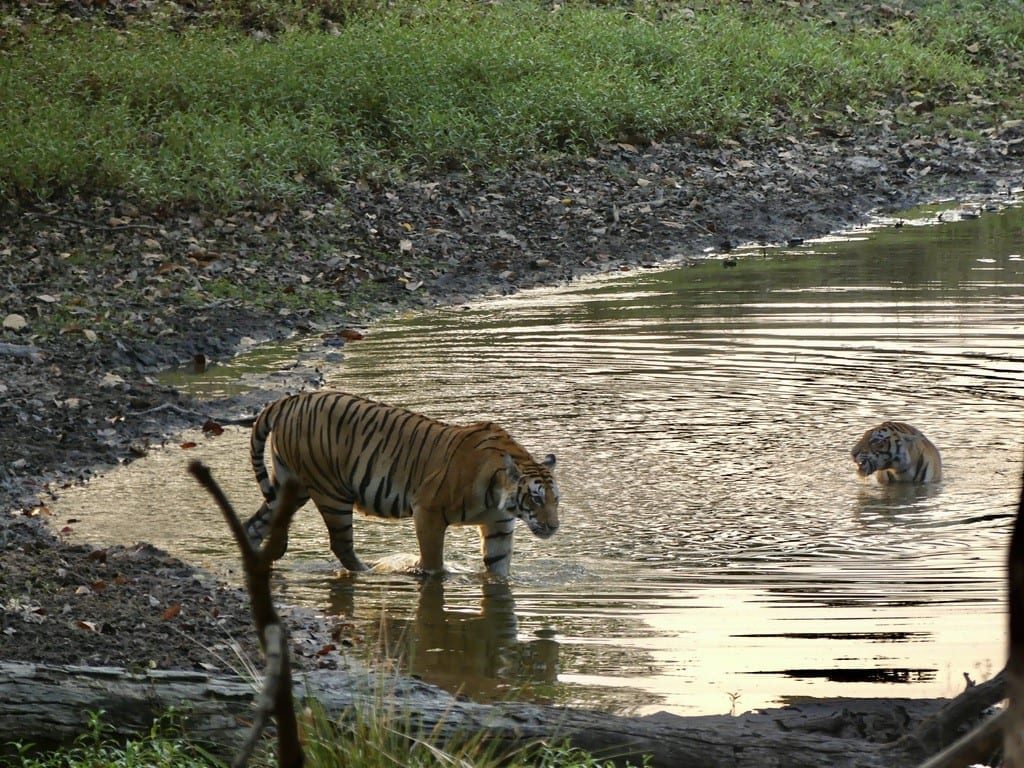 |
| Panthera tigris tigris | Female tiger and her cub bathing in the early light of the morning |
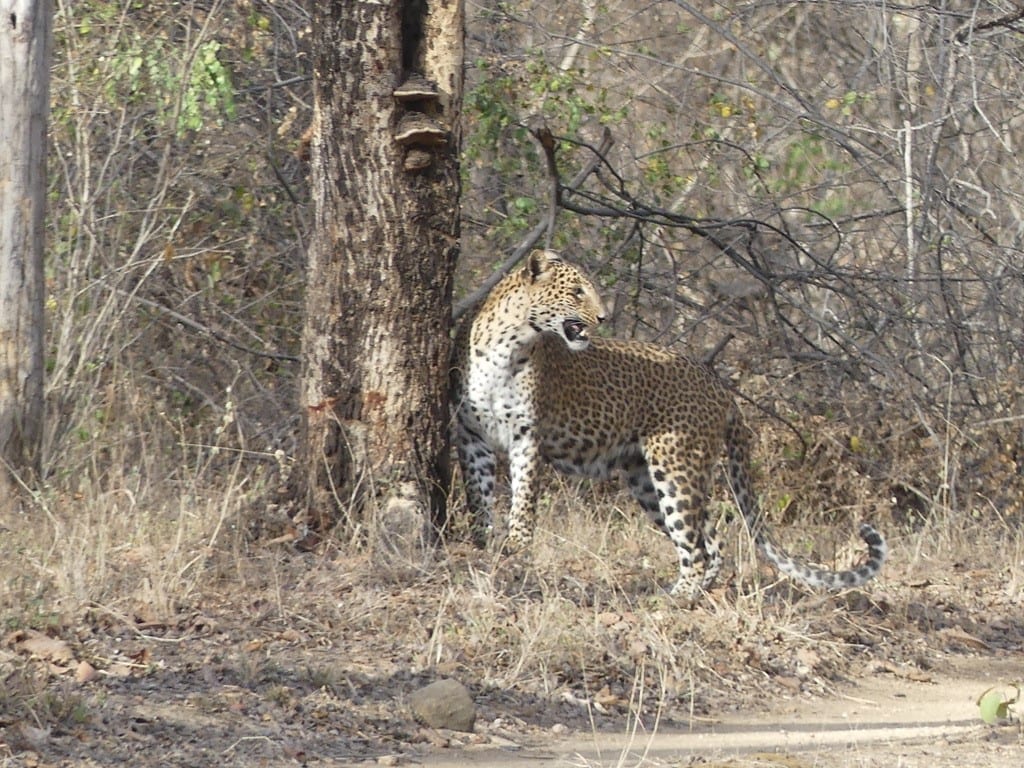 |
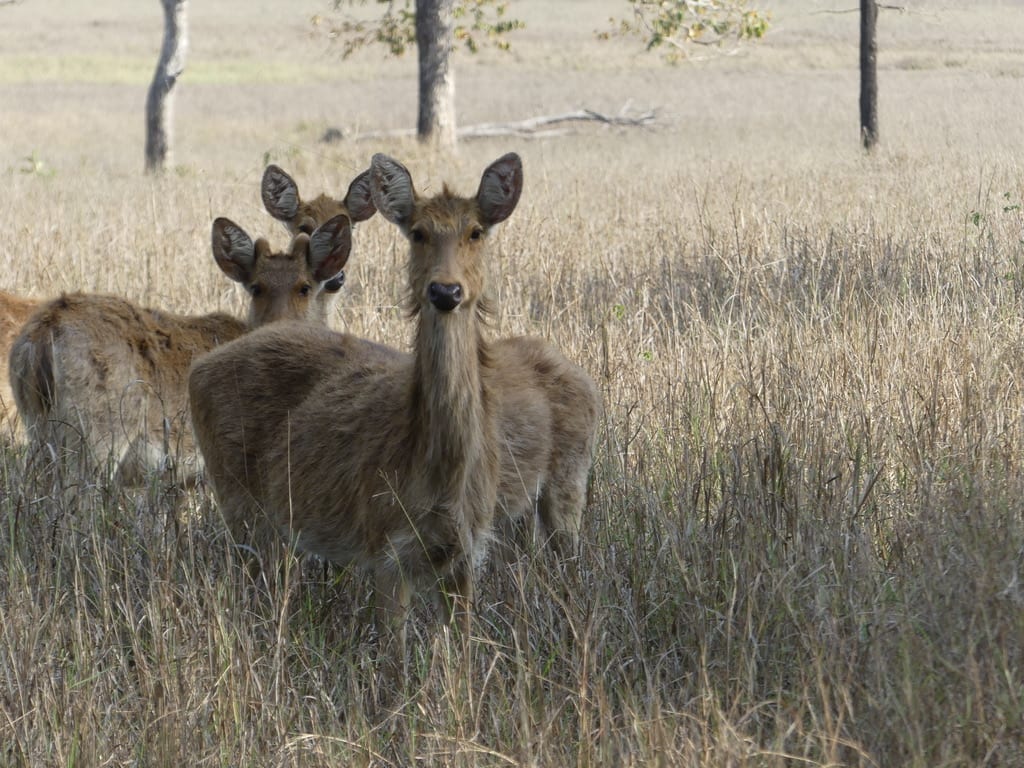 |
| Common leopard (Panthera pardus) | Chausingha or four-Horned Antelope (Tetracerus quadricornis) |
 |
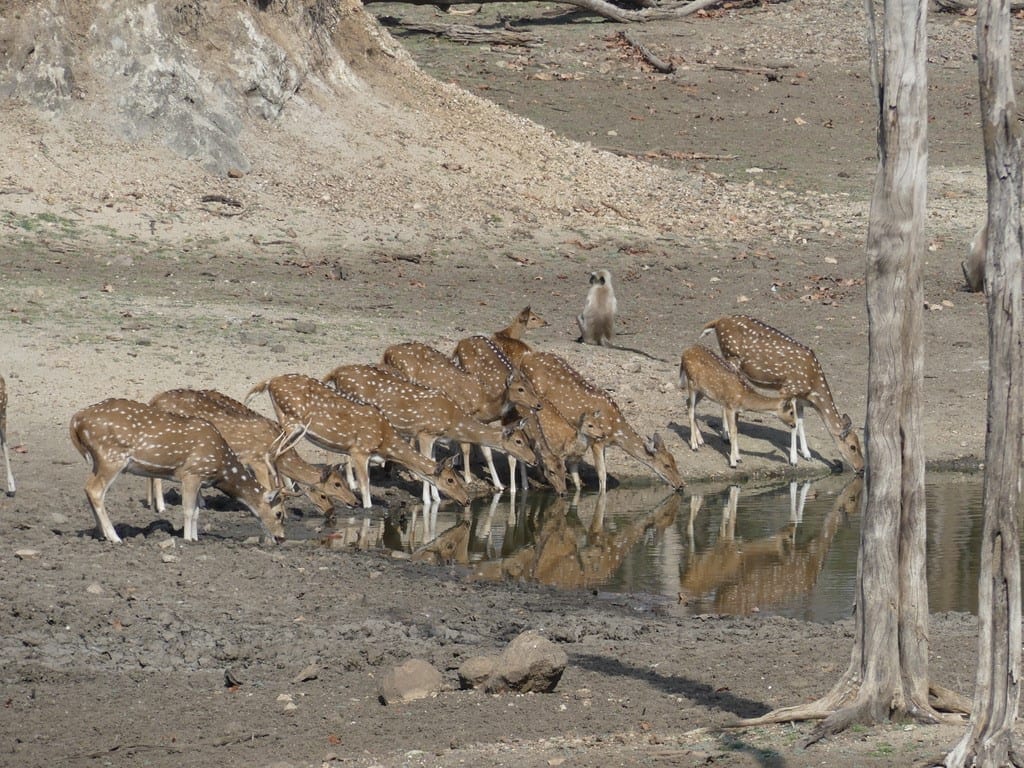 |
| Swamp deer or Barasinga (Rucervus duvaucelii) | Spotted deer or Chetal (Axis axis) |
 |
 |
| Northern plains langur (Hanuman Langur) | Greater one-horned rhinoceros (Rhinooceros unicornis) |
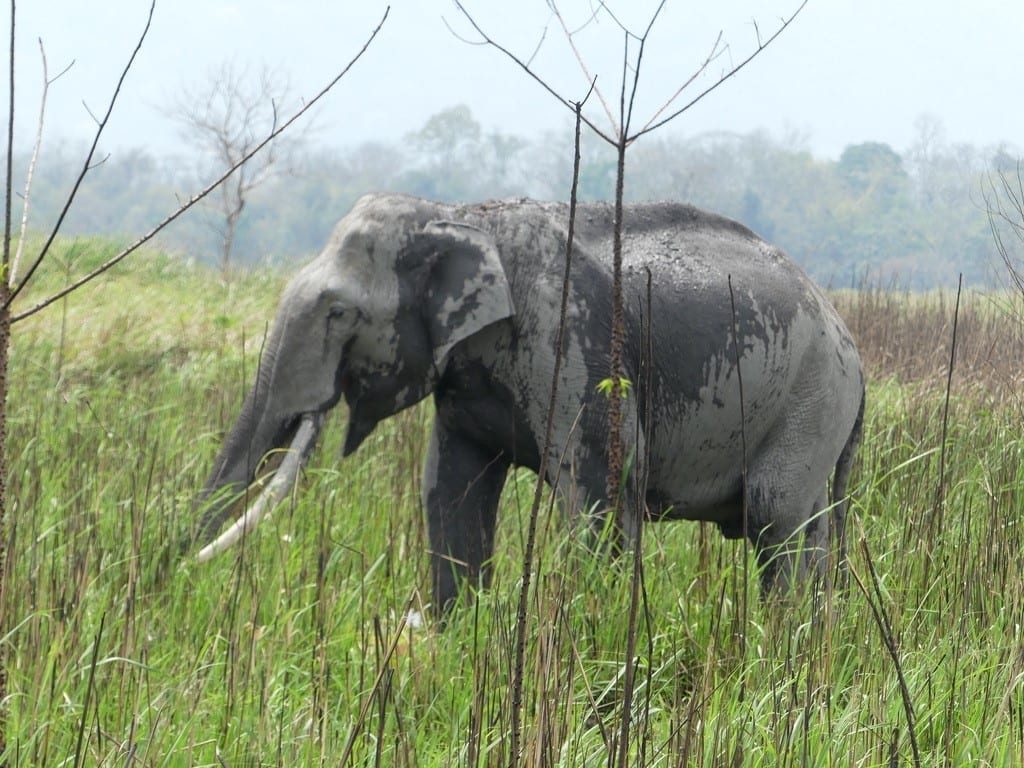 |
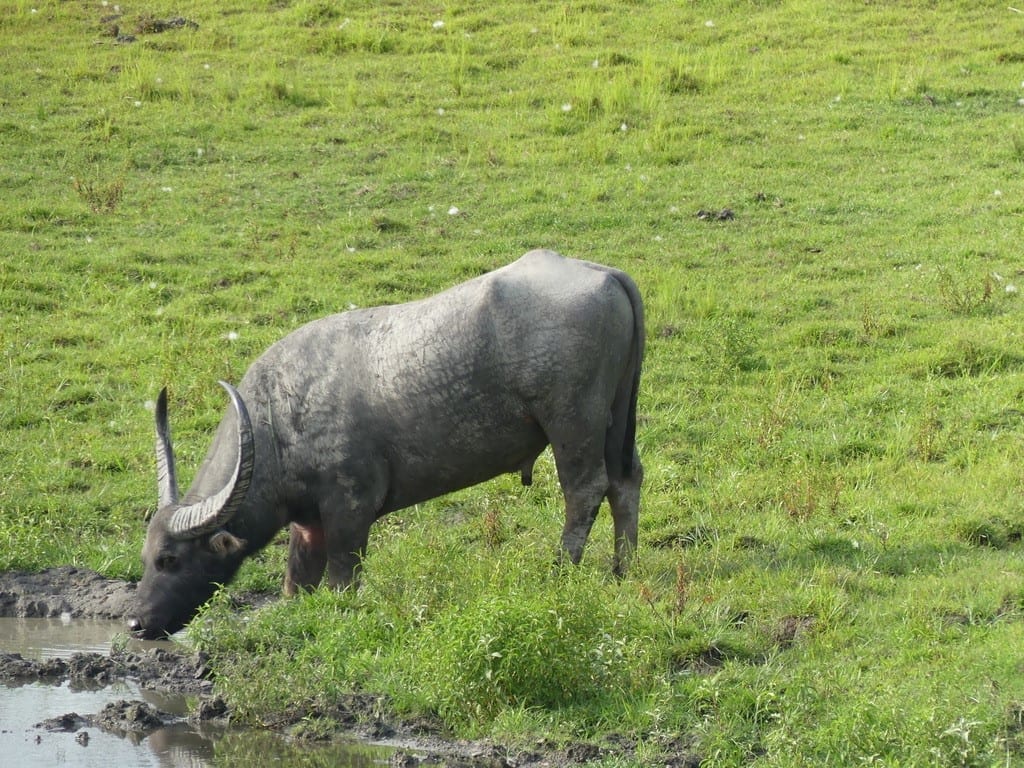 |
| Wild Asian elephant (Elephas maximus) | Wild buffalo (Bubalus arnee) |
 |
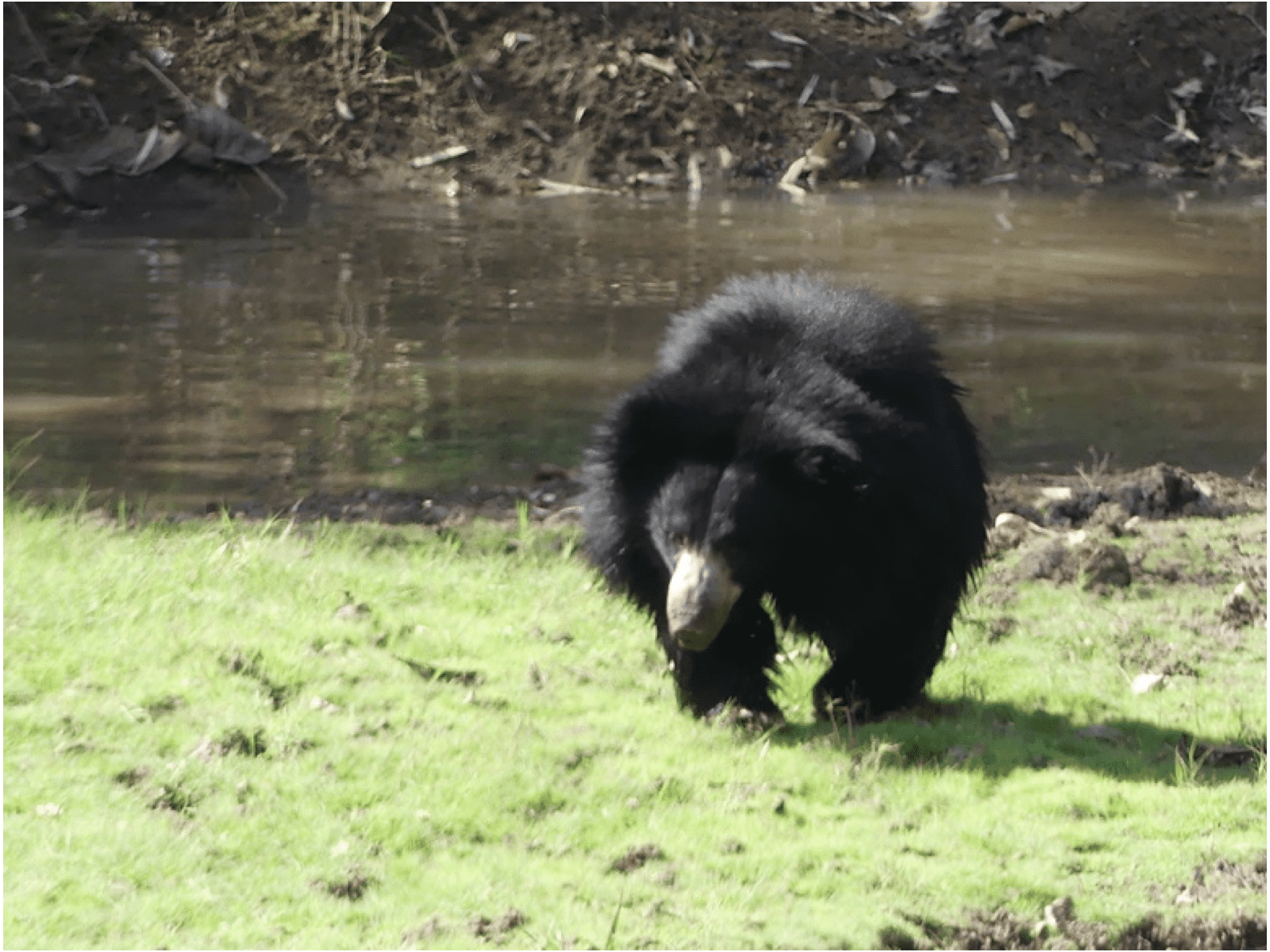 |
| Wild pig (Sus scrofa) | Sloth bear (Melurus ursinus) |
End Notes
- Pug Mark Photograph kindly provided by Marco Tonili, Apex Expeditions
- By contrast, the Asiatic lion once shared a range that overlapped that of the tiger but is now confined to a small area in the Gujurat province. Phylogenetically, the Asiatic Lion came out of Africa and is most closely related to North and West African lions.
- A tiger subspecies that has received significant attention is the Amur or Siberian tiger. There are perhaps 500 of these Amurs in the unpopulated conifer forests of eastern Russia. At one time they were believed to be the largest of the Panthera subspecies weighing over 700 pounds. Currently, they are found to be slightly smaller than the Indian tiger; adult males weighing approximately 500 pounds and adult females approximately 400 pounds.
- It is distressing to learn that there are more tigers in roadside zoos or illegal breeding camps in the US and Asia than in the wild. “The Tiger Next Door” by Sharon Guynup and Steve Winter (photographer) National Geographic, December 2019.
- All photographs in this article unless otherwise stated are from the author’s personal collection
References
- Prena Singh Bindra, The Vanishing: India’s Wildlife Crisis, Penguin – Viking, 2017
- Rudyard Kipling, The Jungle Books, Edited by Kaori Nagai, Penguin Books, Third Edition, 2015
- Tobias J. Lanz, The Life and Fate of the Indian Tiger, Praeger, 2009
- Kailash Sankhala, Tiger: The Story of the Indian Tiger, Collins, London, 1978
- George B. Schaller, The Deer and the Tiger: A Study of Wild Life in India, The University of Chicago Press, 1967
JAMES L. FRANKLIN, MD is a gastroenterologist and associate professor emeritus at Rush University Medical Center. He also serves on the editorial board of Hektoen International and as the president of Hektoen’s Society of Medical History & Humanities. He has traveled extensively in Africa and Asia.

Leave a Reply